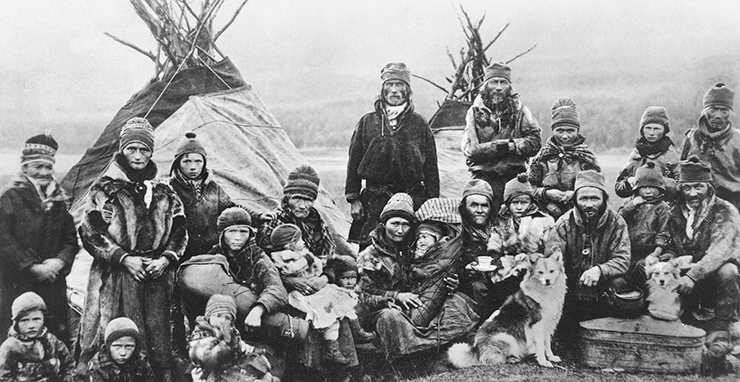
Norwegian traditional clothing is a vibrant expression of the country’s cultural heritage, with each piece reflecting the unique history and environment of its region. The garments are designed to be both beautiful and practical, making them perfect for Norway’s varying climates. Here is a closer look at some of the distinctive traditional clothing pieces for both women and men.
Women’s Traditional Norwegian Clothing
Bunad
Bunad is the most iconic piece of traditional Norwegian clothing for women. Each region in Norway has its own version of the Bunad, with specific colors, patterns, and embroidery that reflect local traditions. A typical women’s Bunad includes a long woolen skirt, a bodice, a blouse, and an apron, often enhanced with elaborate silver jewelry.
Løslomme
A Løslomme is a detachable pocket that is often worn with the Bunad. It is both a functional and decorative piece, usually made from the same fabric as the Bunad and intricately embroidered.
Beltestakk
The Beltestakk is a distinctive type of Bunad from the Telemark region. This outfit is known for its richly decorated belt (belte), which is often embroidered with vibrant colors and detailed patterns. The Beltestakk also includes a long skirt with colorful pleats, a blouse, and an embroidered bodice. It is one of the more elaborate and eye-catching forms of the Bunad.
Forkle
The Forkle, or apron, is an essential part of many Bunads. It is usually made of linen or silk and can be intricately embroidered or decorated with lace. The Forkle not only serves a decorative purpose but also has historical significance, symbolizing the role of women in Norwegian society.
Bringeduk
The Bringeduk is a decorative chest piece worn with certain Bunads, especially in the Hardanger region. This embroidered panel is attached to the front of the blouse and often features intricate patterns made with beads or silver thread. The Bringeduk adds a unique touch to the outfit and is a striking element of Norwegian women’s traditional clothing.
Sølje
Sølje is the traditional silver jewelry worn with the Bunad. These pieces can include brooches, necklaces, and earrings, often featuring intricate designs that reflect Norwegian craftsmanship. The Sølje is not only ornamental but also carries cultural significance, as it is believed to bring good luck and protect against evil spirits.
Men’s Traditional Norwegian Clothing
Bunad
The men’s Bunad is a traditional outfit that varies by region, featuring unique designs that represent local culture. A typical men’s Bunad includes woolen trousers or knee-length breeches, a waistcoat, and a jacket, often adorned with regional embroidery and silver buttons.
Busserull
The Busserull is a traditional Norwegian work shirt often worn by men in rural areas. Made from sturdy cotton or linen, the Busserull is typically dyed blue or red and features simple patterns. It was originally worn by farmers and laborers but has since become a popular item in folk costume, symbolizing the working-class heritage of Norway.
Kofte
The Kofte, or traditional Norwegian sweater, is a staple in men’s clothing. Made from wool, the Kofte is known for its warmth and durability. The most famous pattern is the Setesdal design, characterized by its black and white geometric shapes and pewter clasps. The Kofte is worn both casually and as part of formal attire.
Knestrømper
Knestrømper are traditional knee-high woolen socks worn with the men’s Bunad. These socks are often hand-knitted and feature patterns that complement the overall outfit. Knestrømper are typically paired with knee-length breeches, providing both warmth and a traditional look.
Skinnlue
The Skinnlue is a traditional leather cap worn by men, particularly in Norway’s colder regions. Made from reindeer or other animal hides, the Skinnlue is lined with fur to provide warmth during harsh winters. It is a practical piece of traditional clothing that also reflects the resourcefulness and connection to nature of Norway’s rural communities.
Sami Gákti
The Gákti is traditional clothing worn by both men and women of the Sami people, indigenous to Norway’s northern regions. Made from wool, reindeer leather, or cotton, depending on the season, the Gákti features vibrant colors, elaborate embroidery, and silver decorations. The design and color can indicate the wearer’s marital status, origin, or family, making it a deeply personal and significant garment. The Gákti is worn during Sami cultural events and remains a symbol of Sami identity and pride.
Norwegian traditional clothing, with its variety of unique pieces for both women and men, is a vibrant expression of the country’s cultural heritage. Each garment, whether it’s the elegant Bunad, the practical Busserull, or the symbolic Gákti, tells a story of Norway’s rich history and enduring traditions.
The post Complete Guide to Norwegian Clothing appeared first on The Fashiongton Post.
